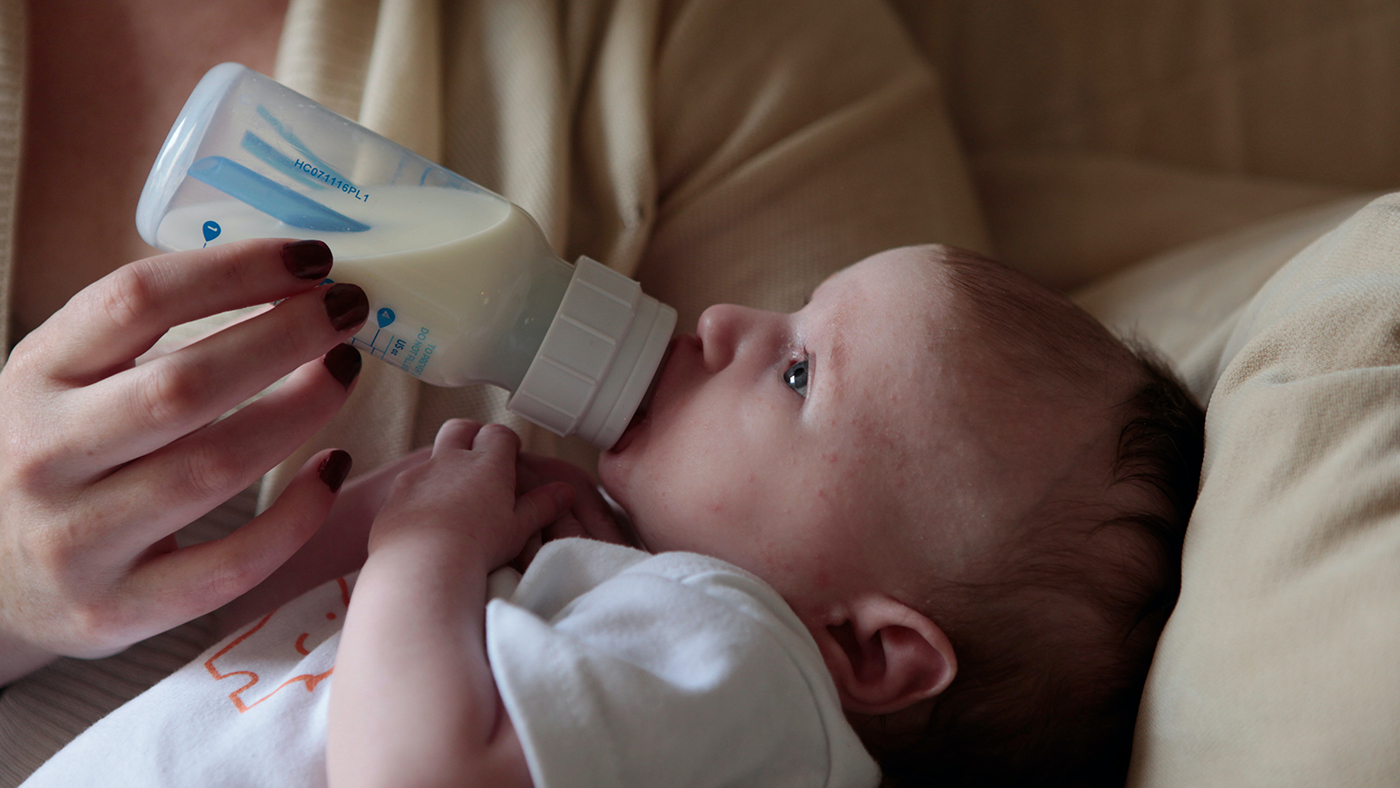Looking into each other's eyes for calm and connection

Your baby has been listening to you since before they were born and has been eager to interact with you! You will probably have noticed this interest as they look at and move in response to the people around them, and now you might notice that they look at you and make eye contact when you hold them for a feed. Your baby may look at you before or just after a feed, but while they are feeding they might also close their eyes or turn towards the breast or bottle.
Feeding, eye contact and making a connection
Your baby is beginning to make and maintain eye contact, and looking at you as you hold them to feed them helps them to build their relationship with you. They will learn about emotions by watching you, and they will rely on you to help them to regulate as they experience emotions, so this closeness is important for them to understand that they can rely on you for support and comfort.
Position, vision and your baby's sense of calm
Feeding your baby positions them at a perfect distance for them to focus on your face. Their vision is still developing and they focus on people and objects around 20 to 30 cm from them. Feeding your baby provides a time when you are close to each other, this touch and closeness helps both you and your baby to feel calm. If you are breastfeeding your brain’s stress response will be reduced and you will produce more prolactin which helps you to feel calm. If you are not breastfeeding, holding your baby as you feed will also provide comfort and calm, as being held close to you reduces the stress responses in your baby’s brain.[2]
Other prompts from your baby that will grow that bond and communication
You will notice that as well as looking at you, your baby will start to respond to you through movement and noises. Your baby’s social development and language development are closely linked, as they learn about communication through their interactions with the people around them. In the next few months, they will find more ways to interact and might use looking at you and at objects as a way to respond to or initiate an interaction. So, keep making eye contact and chatting and responding to your baby – it'll help you both to feel calm and connected.
References:
[1] Addyman, C (2020) The laughing baby: The extraordinary science behind what makes babies happy. London: Unbound.
[2] Gerhardt, S. (2004) Why love matters. How affection shapes a baby’s brain. Hove: Bruner-Routledge.